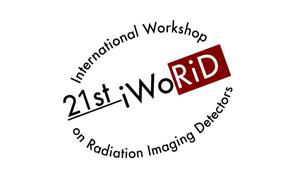Speaker
Description
The Adaptive Gain Integrating Pixel Detector (AGIPD) are hybrid multi-megapixel detectors developed by DESY, PSI, and the Universities of Bonn and Hamburg for use at the European XFEL.
The European XFEL is an extremely brilliant Hard X-ray Free Electron Laser Source with a unique non-uniform pulse structure, in which bursts of up to 2,700 X-ray pulses are emitted at a rate of up to 4.5 MHz on a 10 Hz overall cycle. The individual photon pulses are of extremely high brilliance, i.e. containing up to 10^12 12 keV photons/pulse (depending on photon energy) and extremely short (≤100 fs) in duration. For diffraction experiments of various kinds the dynamic range covered can span orders of magnitude: it is mandatory to deal with diffracted intensities of up to 10^4 12-keV photons/pulse/pixel while providing reliable single photon detection and single pulse temporal resolution.
Thus the readout ASIC has to provide not only single photon sensitivity and a dynamic range up to >10^4 photons/pixel in the same image, but also a memory to store as many images of a pulse train as possible for delayed readout in the gap between two bursts. The AGIPD 1.1 ASIC uses a 130 nm CMOS technology and radiation tolerant techniques to withstand the radiation damage incurred by the high impinging photon flux.
Two 1M pixel AGIPD detector systems have been installed at the European XFEL, one (SPB) at the SPB/SFX beamline and one at the MID scientific instrument. The SPB AGIPD has been successfully utilized for the first user run of European XFEL in late 2017, already having resulted in high-ranked publications from those experiments. Meanwhile, the AGIPD at MID together with instrument have been commissioned and already had a first successful experimental user run in 2019.
There are two 2nd generation AGIPD detectors for the European XFEL currently under construction: One for the SFX (Serial Femtosecond Crystallography) user consortium at the SPB/SFX instrument and one for the HIBEF (Helmholtz International Beamline for Extreme Fields) user consortium. Both detectors incorporate the same readout ASIC, but are built around a new readout board incorporating advanced concepts such as on-board power supplies, a new interlock and timing architecture based on commercial multimedia SER/DES ICs, a new calibration mechanism and fully optical communications and data transmission. Furthermore, the mechanical setup of these detectors with large motion ranges in a vacuum setup made the development of a new cooling concept mandatory.
The SFX detector is mainly used for diffraction from biological samples and with photon energies of around 12 keV, hence Si sensors are utilized. For the HIBEF setup, the typical photon energies employed are in the range of 20-30 keV; while the HIBEF AGIPD detector will initially be delivered with Si sensors as well. Those will later be exchanged for High-Z material sensors currently under development. These sensors are read out with an electron collecting version of the AGIPD ASIC, called ecAGIPD, of which a prototype is currently under test. Some improvements of the in-pixel memory for ecAGIPD were also implemented in the hole-collecting AGIPD 1.2 ASIC, which is used for the remaining production of detector modules based on hole-collecting silicon sensors.
Besides results from the first user beam time at the European XFEL, we will show the concept of the 2nd generation AGIPD detectors for HIBEF and SFX. In addition the AGIPD 1.2 and ecAGIPD readout ASICs together with supporting results will be presented.
